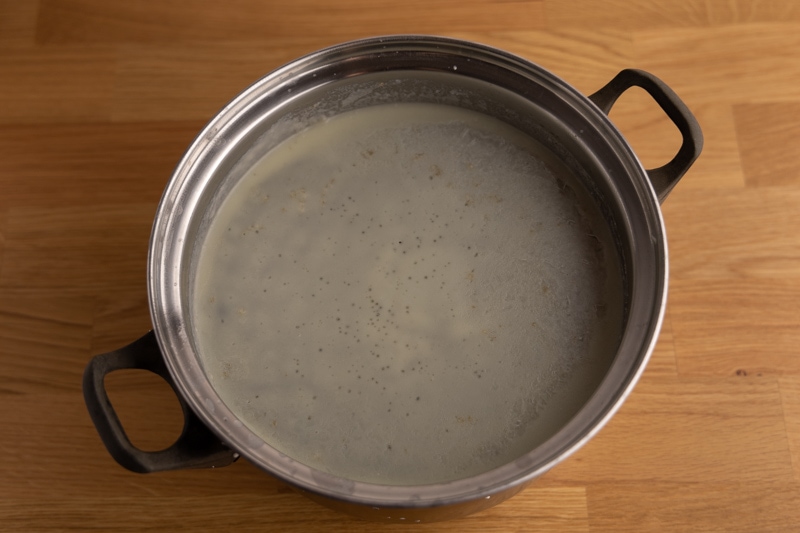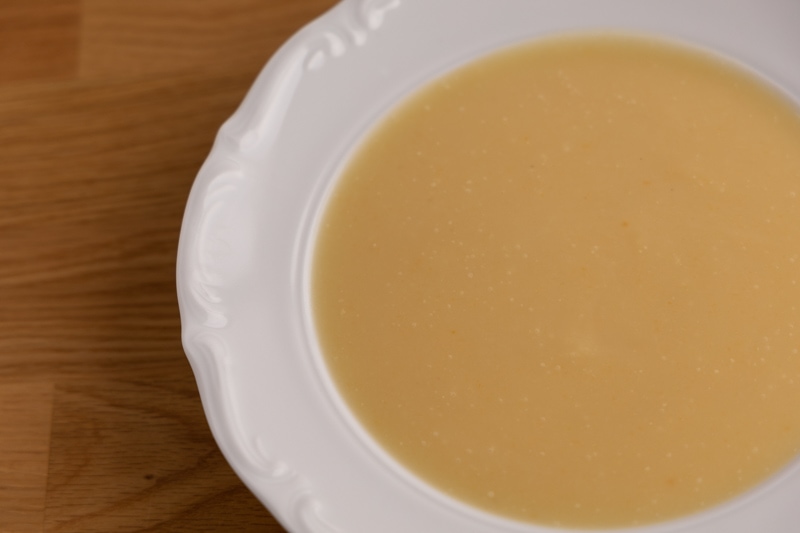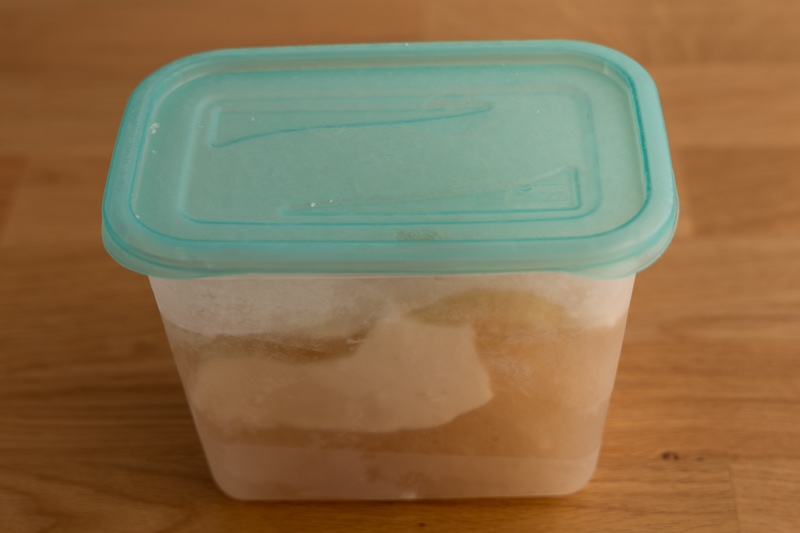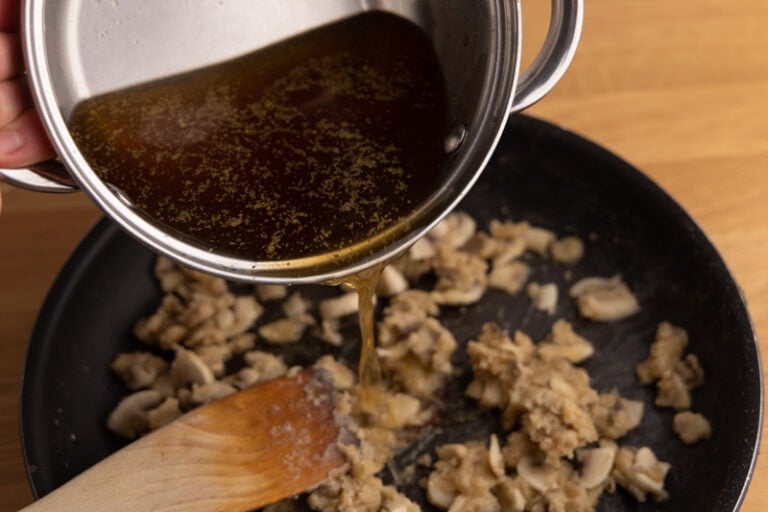How Long Does Bone Broth Last and How to Store It?
Here’s all you need to know about the shelf life and storage of bone broth. Learn how long bone broth lasts, how to store it, and how to tell when it’s spoiled.
Just opened a can or pouch of bone broth, and wondering how long it stays good for? How long does bone broth last in the fridge?
Or maybe you’re a first-timer and have some questions about storage or spoilage.
Sounds familiar?
If so, you’re in the right place. Read on.

How Long Does Bone Broth Last?
Bone broth has a shelf life of about 12 months but typically stays good for at least a couple of extra months. After opening, you can refrigerate it for between 4 and 7 days, depending on what the brand recommends.
If you’ve got some leftovers that you cannot use within that period, you can easily freeze them later.
That’s the lowdown on the shelf life of bone broth.
Next, let’s get into the nitty-gritty.
After Opening
Leftover bone broth keeps for between 4 and 7 days in the fridge, depending on the seller’s recommendation. After that period, it’s not necessarily bad, but it’s no longer safe to drink or use, and you should discard it.
If you can’t find the info on the label, go with the 4-day period, which is the recommended maximum storage time for perishable leftovers. But don’t be surprised if the label says the broth is good for up to 7 days. That’s pretty common (example 1, 2), and you should go with what the label says.
Again, nobody will guarantee that your broth will be spoiled on day 5 (or 8, depending on what’s recommended). But the longer it sits in the fridge, the higher the chance of going bad. And that’s why you should treat the storage period seriously.
And once again, if those 4 to 7 days of storage aren’t enough, you can always freeze the leftovers. It’s a much safer solution than hoping your broth will keep quality for an extra day or two.

Homemade
Homemade bone broth lasts about four days in the fridge before it becomes unsafe to use. After that period, it won’t necessarily spoil, but it’s no longer safe to eat, and you should toss it for safety reasons.
If you’ve cooked a big pot of bone broth and don’t want anything to go bad, the easiest solution is to freeze the leftovers. That’s what I do.
After cooking bone broth, my wife or I make soup and freeze whatever’s left, divided into portions large enough to cook another pot of soup.
(There’s more about freezing bone broth below.)
A similar 3 to 4 days period is also how long homemade soup lasts.
Beyond Expiration Date
There’s no way to tell how long an unopened bone broth lasts after the “expiration” date. But it’s pretty safe to assume that it should retain quality for at least three months, if not more.
Of course, every seller says you should use their broth before the use-by date, but that doesn’t mean the soup base will go bad after that date.
As long as the box or can are still intact, they should stay safe to eat for months beyond the printed date, if not years. But it doesn’t mean the quality will remain that great for that long. And that’s why it’s best to use the broth as soon as you can, possibly within three months of the date on the label.
If the broth is older than that, you can still use it, assuming that it doesn’t show any signs of spoilage (more on that in a moment) and you’re comfortable with using it. If you’re not, consider it gone bad and discard it.
(All of the above applies to chicken broth and beef broth too.)
How to Store Bone Broth
Unopened bone broth is typically shelf-stable, and you only need to refrigerate it after opening it. But some bone broths are sold frozen, and you should place those in the freezer as soon as possible.
When it comes to where the unopened can or box should sit, a cool, dry, and dark spot is what you’re looking for. Something like a cupboard in the kitchen or pantry should work just fine.
After opening, make sure you always seal the bone broth tight when not in use and return it to the fridge as soon as possible.
Finally, always use clean utensils when handling the broth. That means no double-dipping.
Some sellers recommend refrigerating bone broth from the get-go. If that’s the case, definitely follow that suggestion. That said, oftentimes, that broth might still be shelf-stable (check the seller’s site) and store just fine in the pantry.
Next up, let’s talk about freezing bone broth.
Can You Freeze Bone Broth?
You can freeze both store-bought and homemade bone broth. Some brands even sell their broth frozen. All you need to do is to portion the broth based on your needs and chuck the portions in the freezer.
Here’s a step-by-step of how to freeze bone broth:
- Decide on portions. If you need the broth for a soup, large containers or freezer bags are a good option. But if you use it for pan sauces or sipping throughout the day, a small container or maybe even an ice cube tray are better options.
- Divide the broth. Pour everything into the containers of your choice.
- Freeze. Put everything in the freezer.
- (If using an ice cube tray) Transfer frozen cubes into a freezer bag and return to the freezer. Give the cubes a few hours to freeze solid, then transfer them to a container of your choice. I usually use a freezer bag, as it takes less space than a container.
That’s it – the procedure is short and simple.
Bone broth retains quality in the freezer for at least 3 to 4 months, but you can store it frozen for much longer, like half a year or beyond.
(Technically speaking, it stays safe to use indefinitely, assuming it stays frozen.)

When you need to thaw bone broth, there are a few options:
- In the fridge. That will take between 1 to 3 hours for cubes and more than 24 hours for a large container. Make sure to plan ahead.
- On the stove. Place the container (or what have you) in warm water so that the sides defrost and you can release the frozen broth from its container. Then defrost it on the stovetop on low heat. Stay near the pot while doing it, so the liquid doesn’t burn.
- In the microwave. If the container with the broth is microwave-safe, you can simply toss it in the microwave and start defrosting it. If not, release it from its container using the technique described above, transfer it to a microwave-safe vessel, and defrost it on low until it’s liquid. Stir it after every 30- to 60-second blast to speed up the process and avoid uneven defrosting.
How to Tell if Bone Broth Is Bad?
Bone broth has gone bad if it smells sour or otherwise bad, or if its taste is off. You should also toss it if it’s unopened and the can or box is not intact, or if it’s opened but stored for more than 4 to 7 days, depending on what the brand recommends.
That’s the short story. Next, let’s get into the details.
Discard your bone broth if:
- The can or box is leaky or swollen, or the can is rusty. You can’t be sure the broth is spoiled if either of these happens, but you can’t be sure the broth is okay either. Better safe than sorry.
- It smells off. A sour, “funny,” or otherwise bad aroma means the broth is no good. As with most foods, if it doesn’t pass the smell test, it’s out.
- Is opened for longer than recommended. As already mentioned, bone broth typically keeps for between 4 and 7 days of opening, depending on the brand. And if yours already sits in the fridge for longer than that, assume it’s not safe to use and toss it.
- The taste is bad. If the broth doesn’t show either of the above spoilage signs, it’s time to take a small sip. If the flavor is a-okay, feel free to use that broth. Otherwise, it’s time for it to go.
Those are the most common spoilage signs of bone broth. But before we wrap this section, let’s briefly talk about what might seem suspicious but is actually okay.
First, a white layer of fat on top of the broth is normal. Even in store-bought bone broths, they leave some of the fat in, and it might end up as white fatty particles on the surface of the broth. That’s normal and expected.
Second, if the broth contains no artificial ingredients, its taste and texture might vary from batch to batch. Again, totally normal.
Finally, if you don’t filter homemade bone broth using a cheesecloth or something similar, it will be cloudy, and there will be some sediment on the bottom of the pot. That’s just the nature of broths.
If you’d like to read more on the spoilage signs of broths, check out my article on the spoilage of chicken broth. Most of the points I make there stay true for bone broth too.
Rotten Records: Share Your Snap!
Caught some food past its prime? Upload your photo to “Rotten Records” and help others spot the signs of spoilage. Every image makes our food community safer and more informed!





